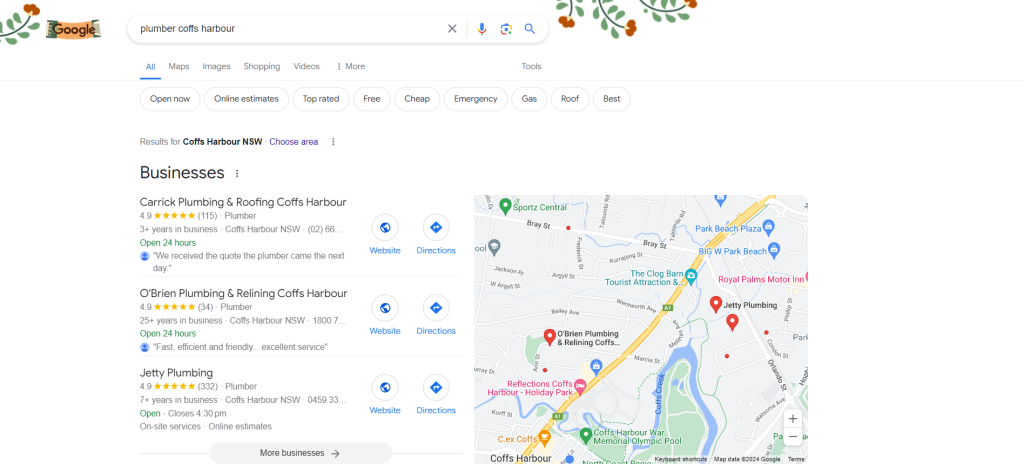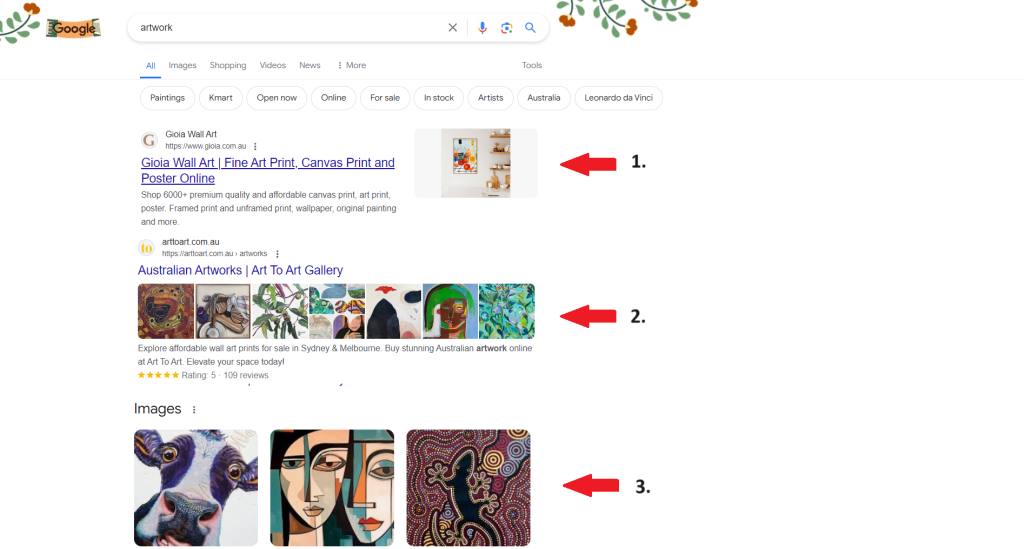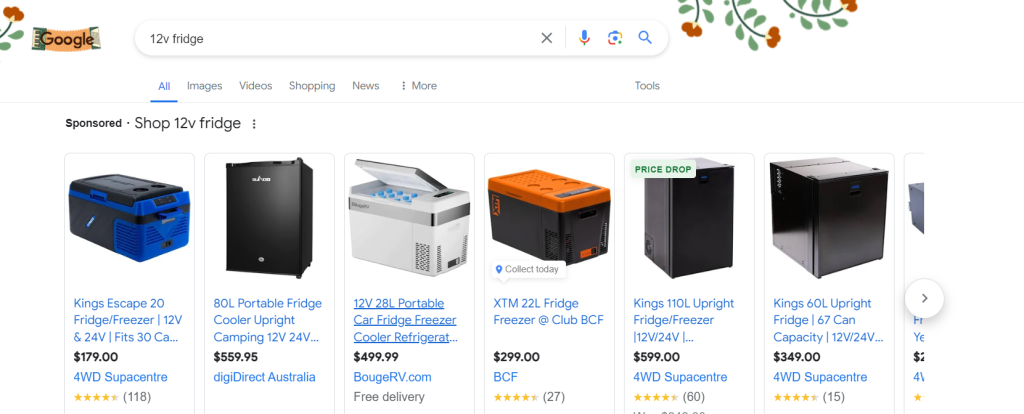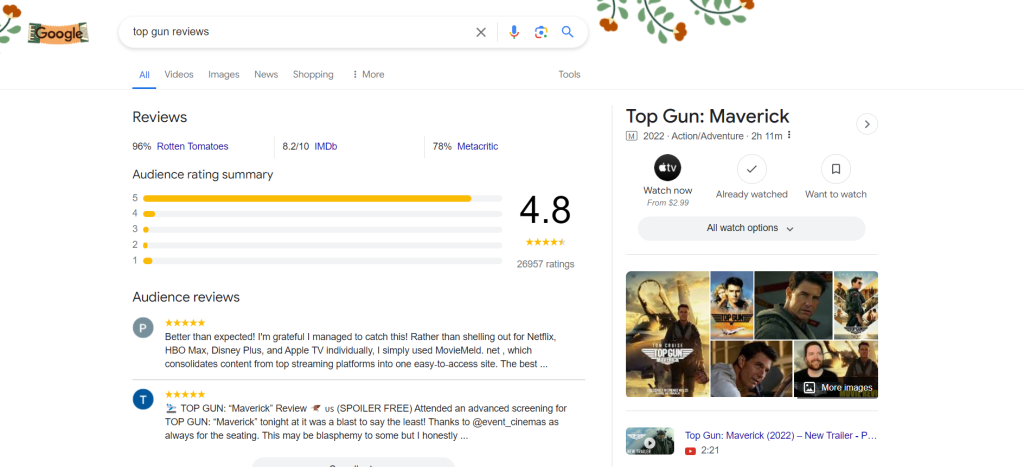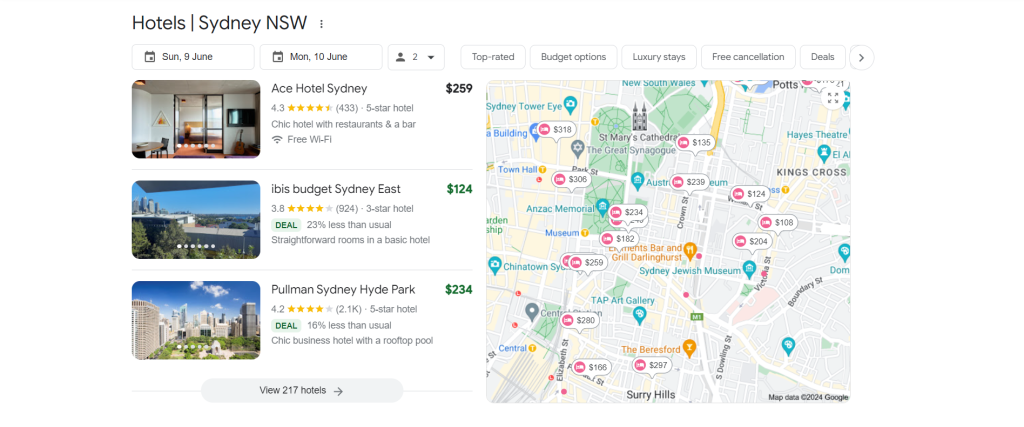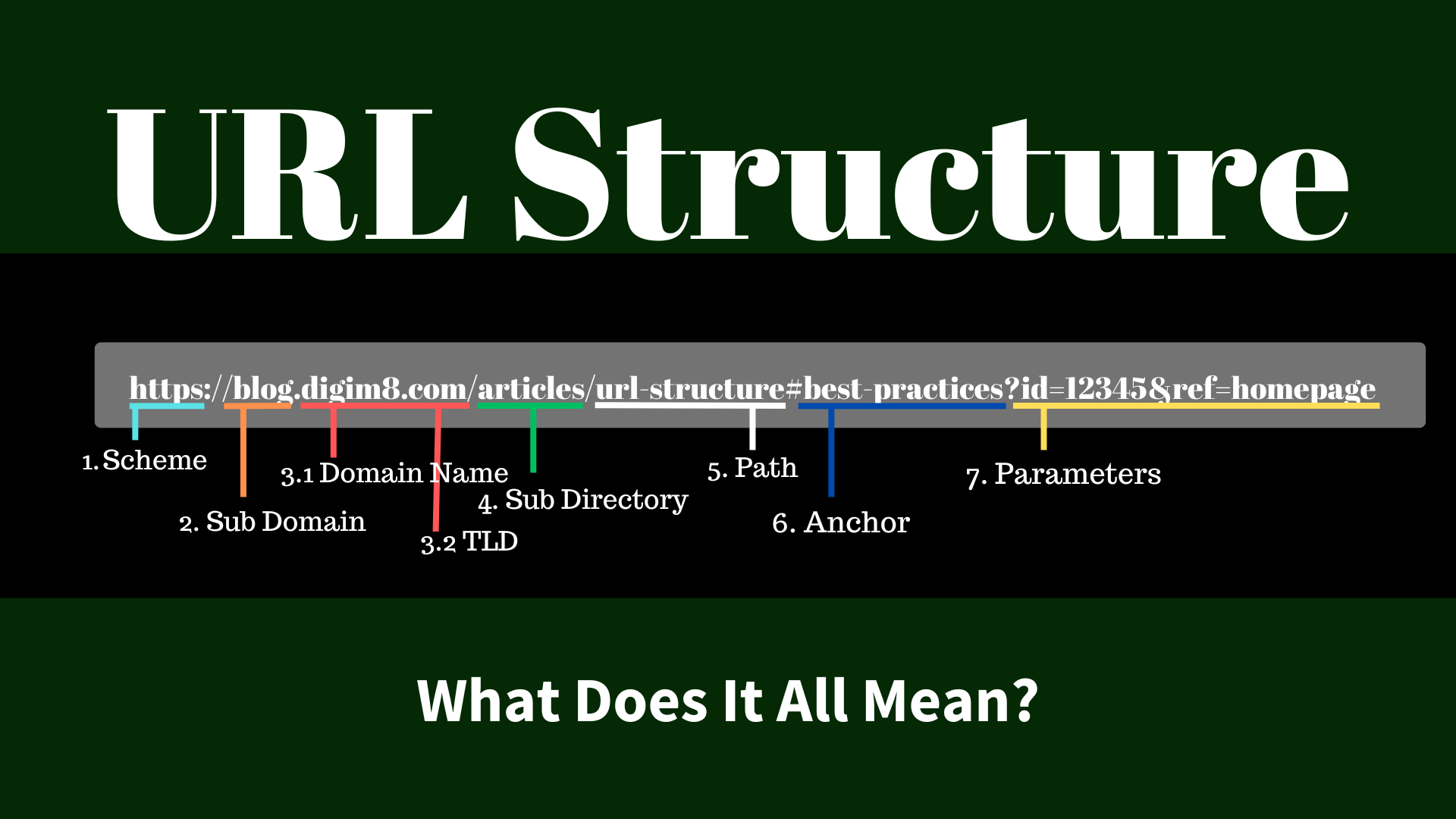Over the past decade as an SEO specialist, I’ve witnessed firsthand how mastering the SERPs can transform a website’s traffic and overall success. The dynamic nature of SERPs means that what worked yesterday might not necessarily work tomorrow.
Throughout my career, I’ve seen Google continually evolve its SERP layout, introducing new features like knowledge panels, featured snippets, and local packs, while constantly refining its algorithms to improve user experience and relevance.
Early in my career, I remember the excitement and challenges of seeing my first client’s website climb from obscurity to the coveted first page of Google. Back then, achieving a top ranking often meant focusing on traditional organic results. However, as Google introduced more interactive features directly on the SERP, such as image carousels, video thumbnails, and answer boxes, the landscape of SEO evolved dramatically.
The insights and strategies I’ve gathered along the way have become invaluable tools in helping countless businesses achieve their online goals. Staying ahead in the world as an SEO Agency requires not only a deep understanding of search engine algorithms but also a proactive approach to adapting to changes.
In this article, I’ll share the critical aspects of SERPs and how you can leverage them to enhance your website’s performance, emphasizing the importance of staying up-to-date with Google’s ever-changing SERP features and algorithms to maintain competitive advantage in the digital marketplace.
What is SERP?
Search Engine Results Pages (SERPs) are the pages displayed by search engines in response to a user’s query. When you type a keyword or phrase into a search engine like Google, Bing, or Yahoo, the page that appears with a list of search results is called the SERP.
SERPs can contain various types of results including organic search results, paid advertisements, featured snippets, image packs, video results, local packs, and more.
SERPs are dynamic and personalized, meaning that two users searching for the same keyword might see different results based on factors like their location, search history, and device. This dynamic nature makes understanding and optimizing for SERPs a complex but critical aspect of SEO.
The landscape of SERPs is constantly evolving. Emerging technologies like artificial intelligence (AI) and machine learning are expected to further personalize and refine search results.
Understanding these trends and staying adaptable will be essential for future-proofing your SEO strategies. Investing in high-quality content, technical SEO, and a user-centric approach will continue to be the foundation of successful SEO in the years to come.
Why Are SERPs Important for SEO?
SERPs are crucial for SEO because they determine how visible and accessible your website is to potential visitors. Here’s why they matter:
- Visibility and Traffic: Higher rankings on SERPs lead to greater visibility and more organic traffic. Websites that appear on the first page of search results receive the majority of clicks, with the top three results capturing the lion’s share of the traffic.
- Credibility and Trust: Users tend to trust and click on websites that appear at the top of the SERP. High rankings signal to users that your site is authoritative and relevant, enhancing your credibility.
- Competitive Advantage: Being aware of how your competitors are performing on SERPs can inform your SEO strategy. Understanding which keywords they rank for and how they optimize their content can help you identify opportunities and gaps.
- User Experience: Search engines prioritize delivering the best user experience. A well-optimized site that ranks high on SERPs typically provides a better user experience, which includes fast loading times, mobile-friendliness, and high-quality content.
What Are The SERP Features?
Featured Snippets
Featured snippets are selected search results that appear at the top of Google’s search engine in a special box, providing a quick and concise answer to a user’s query.
Often referred to as “position zero,” featured snippets are designed to give users the most relevant information directly on the SERP, without requiring them to click through to a website. These snippets can come in various formats, including paragraphs, lists, tables, and videos.
The content for featured snippets is pulled from one of the top-ranking pages for the given query, and it typically answers the question succinctly. Featured snippets are particularly valuable for SEO as they increase visibility and can significantly boost click-through rates (CTR).
To optimize for featured snippets, focus on creating clear, concise, and well-structured content that directly addresses common questions within your niche. Use headings, bullet points, and tables where appropriate, and ensure your content is formatted in a way that search engines can easily parse and display. By doing so, you can improve your chances of capturing these highly coveted spots and driving more organic traffic to your site.
Here is an example displaying the featured snippets for “feature snippet”:
Google Ads
Google Ads are paid advertisements that appear at the top and bottom of Google’s search results. These ads operate on a pay-per-click (PPC) model, where advertisers bid on keywords relevant to their business.
When users search for these keywords, Google displays the highest-bidding ads prominently in the SERP, marked with a small “Ad” or “Sponsored” label to distinguish them from organic results.
Google Ads provide immediate visibility, making them an effective tool for driving targeted traffic to websites. They allow businesses to reach potential customers precisely when they are searching for related products or services. Advertisers can tailor their campaigns based on factors like location, device, and user behavior, ensuring a highly targeted approach.
The ads are created using Google Ads (formerly AdWords), where businesses can set budgets, choose keywords, write ad copy, and select landing pages. The performance of these ads is continuously monitored and optimized for better ROI.
In essence, Google Ads in SERPs are a vital component of a comprehensive digital marketing strategy, providing a quick way to gain visibility and attract potential customers while supporting overall SEO efforts by driving traffic and enhancing brand recognition.
Here is an example displaying the google ads feature for “car leasing sydney”:
Local Pack
Local packs, often referred to as “local 3-packs” or “map packs,” are a prominent feature that showcase local businesses related to a user’s search query. When a user searches for a service or product with local intent, such as “best coffee shops near me” or “plumbers in Chicago,” Google displays a local pack at the top of the SERP. This pack typically includes three local business listings, each with the business name, address, phone number, reviews, and a map pinpointing their location.
Local packs are crucial for businesses because they provide high visibility, especially on mobile devices where local searches are prevalent. These listings are not only shown above the organic results but also include a map, making it easier for users to find and visit the businesses. To appear in local packs, businesses must optimize their Google My Business profiles, encourage customer reviews, ensure accurate NAP (Name, Address, Phone number) information across all online platforms, and implement local SEO strategies. Being featured in a local pack can significantly increase foot traffic, calls, and website visits, making it an essential component of local SEO efforts.
Here is an example displaying the local pack feature for “plumbers in Coffs Harbour”:
Site Links
Sitelinks are additional links that appear under the main URL listing, leading to specific pages within a website. These links are designed to help users navigate directly to the most relevant sections of a site, improving the overall user experience and reducing the number of steps needed to find specific information.
For example, when searching for a brand name or a well-known website, the main result might show the homepage, while the sitelinks might include shortcuts to popular sections like “About Us,” “Contact,” “Products,” or “Blog.” These sitelinks are automatically generated by search engines like Google based on the site’s structure and the perceived importance of its pages.
Sitelinks are beneficial for both users and website owners. Users can quickly find the information they need without navigating through the site, while website owners can enjoy higher click-through rates and more focused traffic. To increase the chances of sitelinks appearing in SERPs, webmasters should ensure their site is well-structured, with clear navigation and internal linking, and use descriptive and unique titles and meta tags for each page.
Here is an example displaying the site links feature for “Bunnings”:
Featured Images
Featured images are visually prominent elements that enhance search results by providing a relevant image alongside the text snippet. These images, often referred to as “image thumbnails” or “rich snippets,” are extracted from the webpage’s content and displayed in various formats to provide additional context and attract user attention. Google currently showcases images in three distinct ways:
- Image Thumbnails Next to the Website Link: These small images appear alongside the search result’s text snippet, providing a quick visual reference that makes the link more engaging. This format helps draw attention to the search result, potentially increasing click-through rates (CTR).
- A Line of Images from the Webpage: This format displays a series of images in a row beneath the search result snippet. It offers users a more comprehensive visual preview of the content available on the webpage, which can entice users to click through to see more.
- Image Cards: These are relevant images that appear prominently in Google’s image search results. Image cards are larger and more detailed, often displayed in a grid format on the image search page. They provide users with a selection of images related to their query, encouraging deeper engagement with the visual content.
Featured images serve several purposes. They improve the visual appeal of search results, making them more engaging and clickable, which can lead to higher CTR. For businesses and content creators, optimizing featured images can enhance brand visibility and convey key information at a glance.
To ensure images are featured in SERPs, it’s essential to follow best practices such as using high-quality, relevant images that are properly sized. Additionally, utilizing structured data markup, such as schema.org, helps search engines understand the context and relevance of images on your page. By optimizing featured images, websites can not only improve their appearance in search results but also potentially boost their overall SEO performance through increased user engagement.
Here is an example displaying the featured image feature for “artwork”:
Shopping Results
Shopping results are a type of search feature that displays products directly within the search results. These results are part of Google Shopping, a service that allows users to search for, compare, and shop for products across different retailers. Shopping results are typically shown at the top or on the side of the SERP and feature images of the products, prices, store names, and sometimes ratings or reviews.
These results are particularly valuable for e-commerce businesses because they provide an eye-catching, visually rich way to present products to potential customers right on the search results page. By integrating product listings into SERPs, Google offers a seamless shopping experience that allows users to quickly find and compare products without navigating away from the search page.
For businesses, appearing in shopping results requires setting up a Google Merchant Center account and creating product feeds that include detailed information about their products. This can significantly enhance visibility and drive traffic to product pages, ultimately leading to higher conversion rates. Optimizing product listings with high-quality images, competitive pricing, and accurate descriptions is crucial for standing out in shopping results and attracting potential buyers.
Here is an example of a “12v fridge” search displaying shopping feature:
Knowledge Card
Knowledge Cards, also known as Knowledge Graph Cards, are a type of enriched search result displayed prominently on SERPs. They provide concise and direct answers to specific queries, often appearing at the top or right-hand side of the search results. Knowledge Cards are powered by Google’s Knowledge Graph, a massive database that aggregates information from various sources to provide instant answers to user queries.
These cards typically contain structured information extracted from authoritative sources such as Wikipedia, Google Maps, or official websites. They aim to deliver immediate, relevant information without the need for users to click through to a website, making them highly convenient for quick inquiries.
Knowledge Cards can include a wide range of content, such as factual information about people, places, events, organizations, products, and more. They may feature images, charts, maps, reviews, and related links to further explore the topic.
For businesses and websites, appearing in Knowledge Cards can significantly enhance visibility and credibility, establishing authority in their respective fields. Optimizing your content with structured data markup and ensuring accuracy and relevance are key strategies to increase the likelihood of your information appearing in these enriched search results.
News Box
News boxes, also known as news carousels or news snippets, are a special feature that highlight timely and relevant news articles related to a user’s query. These boxes typically appear at the top of the SERP, above the organic search results, and showcase recent news stories from authoritative sources.
Google’s news boxes are designed to provide users with up-to-date information on current events, breaking news, and trending topics directly within the search results. They include headlines, publication dates, and brief snippets of the news articles. Clicking on a news box link directs users to the full news story on the respective website.
For publishers, appearing in the news box can significantly increase visibility and traffic, especially for topics that are trending or breaking news stories. It’s essential for news publishers to optimize their content with relevant keywords, accurate reporting, and timely updates to improve their chances of being featured in Google’s news boxes.
Overall, news boxes in SERPs serve as a valuable resource for users seeking the latest information on important events and topics of interest, while also providing publishers with an opportunity to reach a broader audience quickly.
Here is an example displaying the news box feature for “Sydney News”:
Related Searches
Related searches, also known as “searches related to” or “related queries,” are suggestions provided by search engines at the bottom of the page. These suggestions aim to help users refine their search queries and find more relevant information based on their initial search intent.
Google and other search engines analyze user behavior and search patterns to generate these related searches. They typically appear as a list of keywords or phrases related to the original search query. For example, if someone searches for “best digital cameras,” related searches might include “top rated DSLR cameras” or “affordable mirrorless cameras.”
Understanding related searches is beneficial for SEO and content strategy. It provides insights into what users are interested in beyond the initial query, helping website owners identify additional keywords to target. Incorporating related searches into your content strategy can broaden your reach, increase relevance, and potentially capture more traffic from users exploring related topics.
Moreover, optimizing your content to include related keywords naturally can enhance your chances of appearing in these related searches, further improving your website’s visibility and attracting relevant visitors.
Here is an example displaying the related searches feature for “chewing gum”:
Tweets
Tweets in SERPs refer to X ( formerly Twitter ) posts that appear alongside traditional web pages, images, videos, and other types of content. Google and other search engines often display tweets when they are relevant to a user’s search query, especially for trending topics or real-time events.
The integration of tweets in SERPs provides several benefits:
- Real-Time Information: Tweets offer up-to-the-minute updates and discussions on current events, breaking news, and trending topics. This real-time aspect makes them valuable for users seeking the latest information.
- Diverse Content: Including tweets diversifies SERPs, providing users with different perspectives and sources of information beyond traditional web pages.
- Social Proof: Tweets can serve as social proof, demonstrating engagement and interaction around a topic or brand. Positive tweets and endorsements can influence user perception and decisions.
To optimize tweets for SERPs, ensure they are relevant, timely, and contain keywords related to the topic. Engaging with followers, using hashtags, and participating in trending discussions can also increase visibility in search results.
Here is an example displaying the tweet feature for “Moz“:
Reviews
Reviews refer to user-generated feedback and ratings displayed alongside business listings. These reviews provide valuable insights into the quality and reputation of a product, service, or business. They often appear prominently in local search results, e-commerce listings, and knowledge panels, influencing consumer decisions directly on the SERP.
Reviews serve several important purposes:
- Visibility and Trust: Positive reviews can enhance a business’s visibility and credibility, as users are more likely to click on listings with higher ratings and positive feedback.
- Impact on Click-Through Rates (CTR): Businesses with compelling reviews may experience higher click-through rates, as users perceive them as more trustworthy and relevant to their needs.
- User Engagement: Reviews provide social proof and foster engagement by allowing potential customers to see real-life experiences and opinions before making a decision.
- SEO Benefits: Google considers reviews as a ranking factor for local SEO, especially for businesses aiming to appear in local packs. Having a higher quantity and quality of reviews can positively impact a business’s local search rankings.
Overall, reviews in SERPs play a crucial role in influencing consumer behavior, enhancing online reputation, and optimizing SEO efforts for businesses across various industries.
Here is an example displaying the review feature for “Top Gun”:
Videos
Videos refer to video content that appears as search results on search engine results pages. When users search for certain keywords or queries, search engines like Google may display video results alongside traditional web page links. These video results can include:
- Video Thumbnails: Thumbnails of videos embedded directly within the search results, often accompanied by a title, description, and video duration.
- Video Carousels: A horizontal carousel of video thumbnails that users can scroll through without leaving the search results page.
- Featured Video Snippets: Video clips from YouTube or other video platforms that directly answer a user’s query, displayed prominently at the top of the SERP.
Videos provide users with alternative forms of content consumption, catering to those who prefer visual and auditory information over text. For content creators and businesses, optimizing video content for SEO can enhance visibility and attract more organic traffic. Including relevant keywords in video titles, descriptions, and tags, as well as creating engaging and informative video content, can increase the likelihood of appearing in video results, thereby expanding reach and engagement with potential audiences.
Here is an example displaying the Video feature for “How To Fix A Tyre”:
Accommodation
Accommodation blocks are specialized features that display booking rates and availability directly within the search engine results page. These blocks typically appear when users search for hotels or accommodations in a specific location. They provide users with essential information such as hotel names, prices per night, star ratings, and availability for the dates entered.
For example, when searching for “hotels in Sydney,” Google may display an accommodation block featuring various hotels with their respective prices for the selected dates. Users can compare rates and click through to book directly from the SERP, streamlining the booking process and enhancing user experience.
Accommodation blocks are beneficial for businesses in the hospitality industry as they increase visibility and direct bookings. They also provide users with quick access to relevant information without needing to visit multiple websites. Optimizing for accommodation blocks involves ensuring accurate and up-to-date information on booking platforms and maintaining competitive pricing to attract potential guests directly from the search results.
Here is an example of hotels displaying accommodation feature:
FAQs
The FAQs (Frequently Asked Questions) block displays a series of questions and answers related to the user’s query. This feature is designed to provide quick and concise answers directly on the search results page, enhancing user experience by delivering relevant information without the need to click through to a website.
FAQs are typically displayed in an expandable format, allowing users to view additional questions and answers by clicking on them. They are often sourced from websites that use structured data markup to mark up their FAQ content, making it easier for search engines to understand and display them in the SERPs.
For website owners and marketers, appearing in the FAQs block can significantly increase visibility and drive traffic. It enhances credibility by positioning your website as an authoritative source on the topic. To optimize for the FAQs block, use structured data markup such as JSON-LD to mark up your FAQ content clearly. Focus on providing comprehensive and relevant answers to common questions related to your industry or niche, ensuring they align with user intent and search queries.
Here is an example displaying the FAQs feature for purple dresses:
How to Do SERP Analysis?
SERP analysis is the process of examining the search engine results pages to understand how and why certain pages rank for specific keywords. This analysis helps in crafting a more effective SEO strategy. Here’s how you can perform a SERP analysis:
- Keyword Research: Start by identifying the keywords you want to target. Use tools like Google Keyword Planner, Ahrefs, SEMrush, or Moz to find relevant keywords with good search volume and manageable competition.
- Examine Top Results: Look at the top 10 results for your target keywords. Analyze the type of content (articles, videos, product pages, etc.), the length, format, and quality. Take note of the domain authority and the backlink profiles of these pages.
- Identify Search Intent: Understand the user intent behind the keywords. Are users looking for information, making a purchase, seeking a specific service, or looking for a local business? Align your content to meet this intent.
- Analyze SERP Features: Pay attention to the SERP features that appear for your keywords, such as featured snippets, People Also Ask boxes, image carousels, local packs, and ads. Determine if and how you can optimize your content to appear in these features.
- Content Gaps: Identify what your competitors are doing well and what they might be missing. Look for content gaps where you can provide more value or a unique perspective that isn’t currently available on the SERP.
- On-Page and Technical SEO: Review the on-page SEO factors of the top-ranking pages, including title tags, meta descriptions, header tags, keyword usage, and internal linking. Also, check for technical SEO aspects like page speed, mobile-friendliness, and URL structure.
- Backlink Profile: Analyze the backlink profile of the top-ranking pages using tools like Ahrefs or SEMrush. Understand the quality and quantity of backlinks they have and identify opportunities to build similar or better backlinks for your own site.
- Regular Monitoring: SERPs can change frequently due to algorithm updates, changes in user behavior, and new content being published. Regularly monitor the SERPs for your target keywords to stay updated on any changes and adjust your strategy accordingly.
The Role of Featured Snippets
Featured snippets are selected search results that appear at the top of Google’s SERP, providing a quick answer to the user’s query. They are highly coveted because they appear above the traditional organic results, often referred to as “position zero.” To optimize for featured snippets, structure your content to directly answer common questions and use clear, concise language. Incorporating lists, tables, and Q&A formats can also increase your chances of being featured.
The Impact of Local SEO on SERPs
Local SEO focuses on optimizing your website to be found in local search results. This is particularly important for businesses that operate in specific geographic areas. Local SEO helps your business appear in local packs, which are prominently displayed in SERPs when users search for services or products near their location. To optimize for local SEO, ensure your Google My Business profile is complete and accurate, gather positive reviews, and build local citations.
The Influence of User Behavior on SERPs
User behavior significantly impacts how search engines rank pages. Metrics such as click-through rates (CTR), bounce rates, and dwell time provide search engines with signals about the quality and relevance of a page. High CTRs and longer dwell times generally indicate valuable content that meets user intent, positively influencing rankings. Conversely, high bounce rates might suggest the opposite. Improving user experience by delivering relevant, engaging, and high-quality content can enhance these metrics.
Adapting to Algorithm Updates
Search engines frequently update their algorithms to improve the quality of search results. Staying informed about these updates and understanding their implications can help maintain or improve your rankings. Major updates like Google’s Panda, Penguin, and BERT have significantly changed how SEO is approached. Regularly following industry news, participating in SEO forums, and adjusting your strategies based on the latest updates are crucial for staying competitive.
Mobile-First Indexing
With the increasing use of mobile devices, Google has transitioned to mobile-first indexing, meaning it primarily uses the mobile version of the content for indexing and ranking. Ensuring your website is mobile-friendly is critical for SEO. This includes responsive design, fast loading times, and a user-friendly interface on mobile devices. Tools like Google’s Mobile-Friendly Test can help assess and improve your site’s mobile performance.
Voice Search and SERPs
The rise of voice search, driven by virtual assistants like Siri, Alexa, and Google Assistant, is changing how users interact with search engines. Voice searches are often more conversational and question-based. Optimizing for voice search involves focusing on natural language, long-tail keywords, and providing clear, concise answers to common questions. Structured data and schema markup can also help improve your site’s visibility in voice search results.
Conclusion
SERPs are a central element of SEO, influencing visibility, traffic, and credibility. By understanding what SERPs are, why they are important, and how to analyze and optimize for them, you can improve your website’s performance and achieve better search engine rankings. Regular monitoring and adapting to changes in SERPs, driven by algorithm updates and evolving user behavior, are essential for maintaining a competitive edge in the dynamic field of SEO




